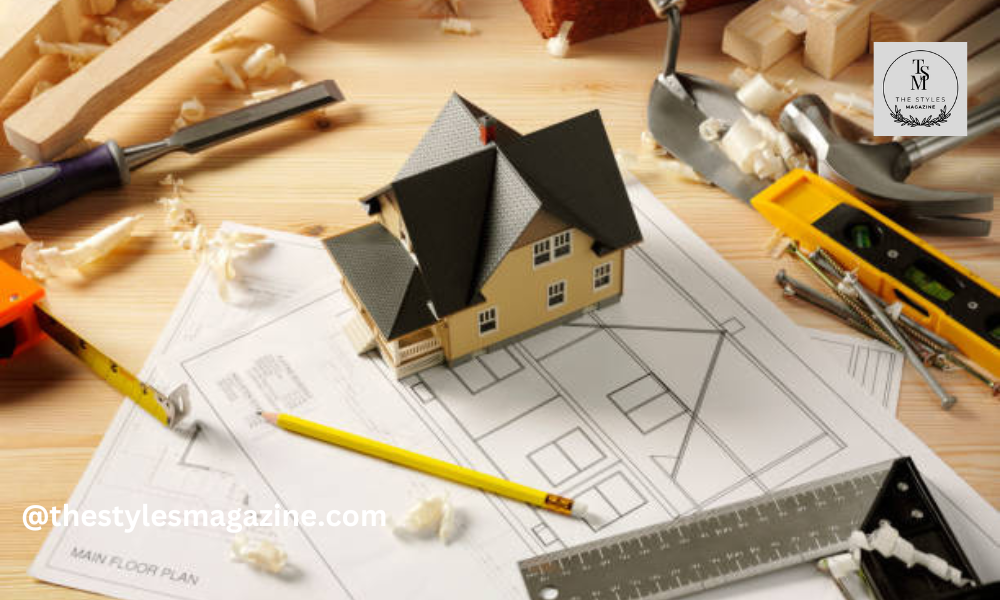Your home should evolve with you, not just in style, but in function, layout, and meaning. Whether it’s aging in place gracefully, welcoming extended family, or creating a space for remote work and income opportunities, homeowners are thinking bigger about how their living spaces can support long-term goals. Remodeling and accessory dwelling units (ADUs) are no longer just trend-driven upgrades; they’re intentional investments in a home’s future.
Today’s design-savvy homeowners are blending luxury with practicality, reimagining traditional floor plans and backyard space to support dynamic lifestyles. The modern approach goes far beyond surface-level improvements—it’s about structural personalization, adaptive living, and seamless transitions. According to cooper design build & remodeling, portland, or, luxury home remodeling isn’t just about beautiful finishes—it’s about shaping a home around the people who live in it.
Reimagining The Meaning Of “Home”
As households grow more diverse, so do their needs. Homeowners are increasingly opting to transform underutilized or outdated areas into spaces that do more. Think home offices with built-in functionality, spa-like bathrooms for self-care, and open-concept kitchens perfect for entertaining and everyday life. It’s not just about expanding square footage—it’s about rethinking flow, accessibility, and purpose.
This mindset also extends beyond the main home. Accessory Dwelling Units are becoming a staple in modern residential planning. Whether it’s a backyard cottage for an aging parent, a private studio for remote work, or a short-term rental opportunity, ADUs offer an efficient solution to the growing need for flexible, independent living spaces. At the northeastdesignbuild.com website, experts focus on turning these concepts into beautifully designed realities that work both practically and aesthetically within existing properties.
The Design-Build Difference
The beauty of remodeling today is rooted in the design-build process—a model where designers, architects, and builders work as one cohesive team. This method has quickly outpaced the traditional design-bid-build model in popularity, and for good reason. It streamlines communication, minimizes delays, and keeps the homeowner deeply involved from concept to completion.
When you partner with a design-build team, you’re not just hiring contractors—you’re entering a creative collaboration. You’re able to express your lifestyle goals, design preferences, and budget expectations, all while being guided by professionals who understand how to execute it all under one roof. The result is a more efficient process, fewer surprises, and a finished product that truly reflects the homeowner’s vision.
From reimagined kitchens to attached or detached ADUs, the design-build process ensures that every decision—structural or stylistic—works in harmony. It’s not about what looks good on paper. It’s about what lives well every day.
Building Independence Close To Home
There’s a growing desire to create homes that aren’t just beautiful but that offer autonomy and privacy when needed. This is where ADUs shine. These secondary units can serve many roles: a rental suite for supplemental income, an aging-in-place option for parents or grandparents, or a quiet sanctuary for adult children navigating post-college life.
What makes ADUs particularly appealing is that they offer proximity without sacrificing privacy. A backyard cottage or above-garage flat can provide all the comforts of home—kitchen, bath, living area—while maintaining physical and emotional space between households. It’s a win-win for multi-generational living or homeowners interested in boosting their property’s function and value.
Moreover, cities and counties across the U.S. are beginning to relax zoning regulations around ADUs, acknowledging their importance in expanding housing options. As a result, homeowners are finding it easier than ever to design and build these units as part of a long-term housing strategy.
Remodeling With A Purpose
Luxury isn’t always about square footage—it’s about intention. A purposeful remodel breathes life into a home’s existing footprint. It can transform a closed-off kitchen into the heart of the home or rework a basement into a bright, inviting retreat. When every decision is driven by how you want to live—not just how things look—the results go deeper than aesthetic.
For empty nesters, remodeling can mean repurposing children’s bedrooms into hobby rooms, guest suites, or expanded primary suites with walk-in closets and spa-style bathrooms. For growing families, it could involve knocking down walls to open communal spaces or adding storage solutions that streamline daily life. The key is to think long-term—how will your needs change five, ten, or even twenty years from now?
Modern remodeling is not just reactive; it’s proactive. It’s about creating a home that can shift and stretch with your life, not against it.
Lasting Value, Everyday Joy
There’s no question that thoughtful remodels and ADUs can increase a home’s resale value. But perhaps the more meaningful value is found in everyday joy—waking up in a home that feels like it was built just for you. One that accommodates change without compromise.
Whether it’s welcoming a parent to live closer while maintaining privacy, turning a backyard space into a revenue stream, or remodeling a tired interior into something timeless and energizing, these projects represent more than just good taste—they represent smart living.
Ultimately, remodeling and ADUs aren’t just about today’s comforts. They’re about designing a lifestyle that supports your future in every square foot.
Thank you for exploring our Blog! For additional captivating content, feel free to explore the corresponding category.
Creative Blog Ideas To Inspire A Successful Whole Home Remodeling Journey

